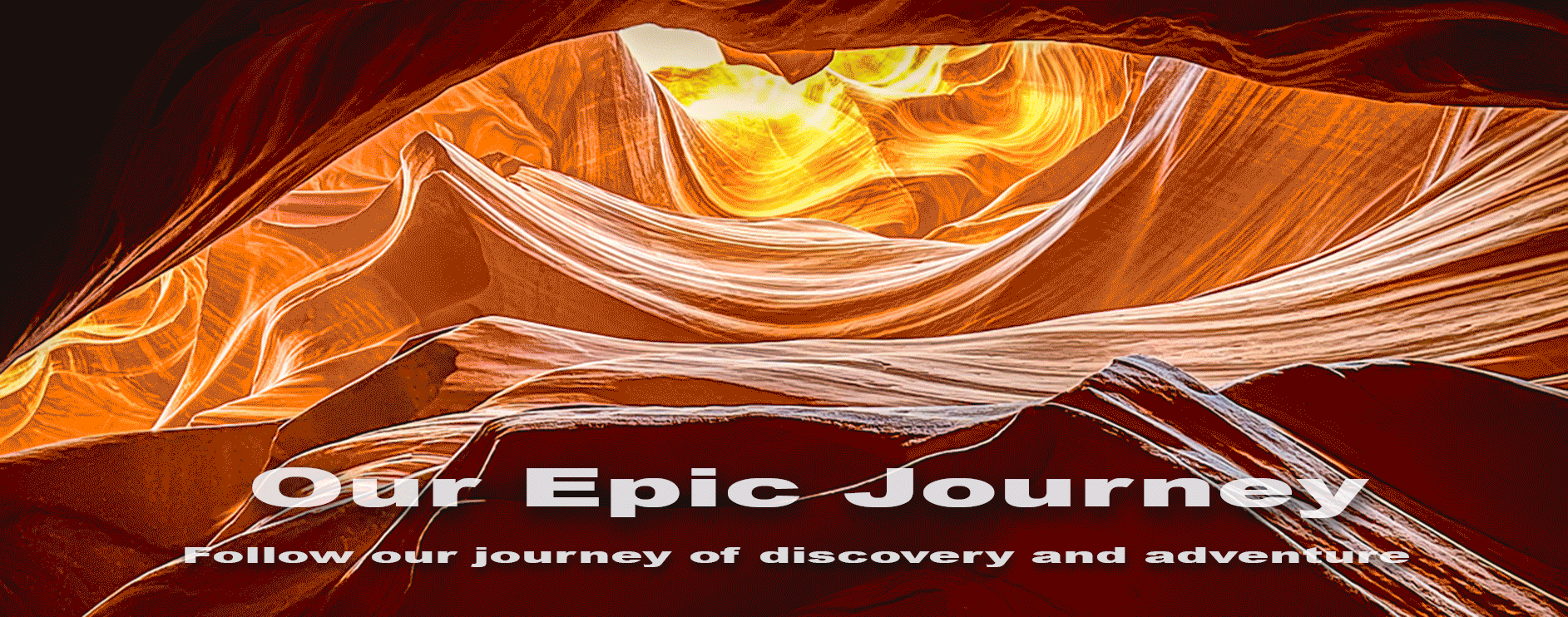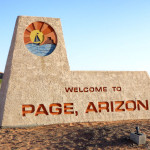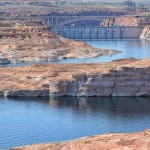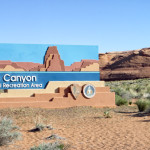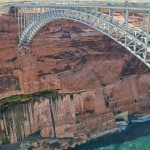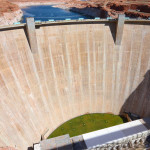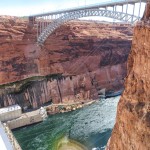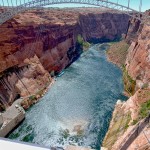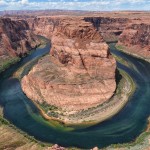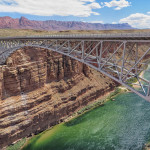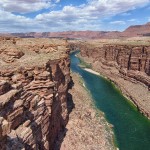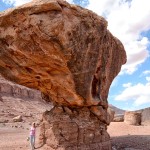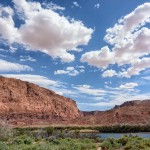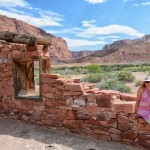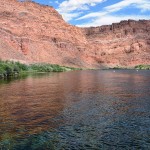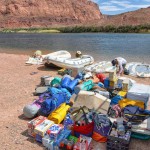We left Williams and the Grand Canyon to drive north to Page, Arizona. We are staying at the Wahweat Marina and RV Park just north of Page, and we have a beautiful view of Lake Powell from our campsite, where we can watch the sunrise over the lake.
Glen Canyon National Recreation Area
Glen Canyon Dam was our first adventure here and we took a one tour of the dam going deep inside the dam, 700 feet down, and 300 feet at its base. It was constructed between 1956 and 1966, the water began to back up behind the dam’s 710-foot wall in 1963, reaching its “full pool” in 1980, and Lake Powell was created. Today the water level is 110 feet below its peak height. From the Glen Canyon Bridge you can get wonderful photos of the dam. At 700 feet above the river, this is the second-highest steel-arch bridge in the world, it was opened on Feb 20, 1959.
We drove across the bridge and headed 5 miles south to visit the iconic Horseshoe Bend, a hairpin turn in the Colorado River. As we walked to the edge of Horseshoe Bend we looked down 1000 feet of sandstone to the Colorado River making a wide sweep around a sandstone escarpment, creating a 270 degree horseshoe shaped bend in the canyon. A wide angle lens is definitely needed to capture the entire bend of the river, and Bob came prepared today.
We continued to drive south to visit Lees Ferry and on the way we crossed the Navajo Bridge which connects the route between the North and South Rim of the Grand Canyon. The historic Navajo Bridge, 18 feet wide with a 40 ton limit, began construction in 1927 and was opened to traffic in Jan, 1929, known as the Grand Canyon Bridge for 5 years and changed to Navajo Bridge in 1934. This bridge was used for traffic for 66 years until it became to narrow and light for the larger vehicles today. The new bridge was opened in 1995, and the historic bridge became a pedestrian bridge with breathtaking views of the Colorado River 467 feet below.
We arrived at Lees Ferry, where in 1871, at the direction of the Mormon Church, John D Lee established a ferry boat service across the Colorado River, providing the first accessible canyon crossing. Lees Ferry is the only place within Glen Canyon where you can drive to the Colorado River. A natural corridor between Utah and Arizona, this historic river crossing opened travel and enabled primarily Mormon settlement at the Four Corners region. Today there are the remains of a fort, post office, ranch buildings and cemetery, from Lees settlement. Today Lees Ferry is the put-in for the rafting adventures on the Colorado River. We saw one company blowing up their rafts in preparation for a 16 day rafting trip down the Colorado River. That will be our next adventure!!!
